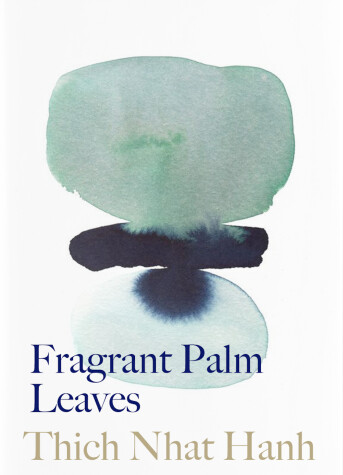Thich Nhat Hanh Classics
3 total works
An ideal starting-point for those interested in Buddhism, Being Peace contains Thich Nhat Hanh's teachings on peace and meditation. Using real examples from his own life, as well as poems and fables, Nhat Hanh explains his key practices for living "right in the moment we are alive." These lessons are taught with fine writing and sparkling phrases that draw the reader in and make Being Peace a book that encourages multiple readings, both alone and in groups.
This new edition of Nhat Hanh's seminal bestseller marks the book's first update since it was released in 1987. It includes a new introduction by noted Buddhist Jack Kornfield and beautiful illustrations by internationally recognized artist Mayumi Oda. Still as timely as when it was first published over 15 years ago, Being Peace is a revelation for anyone concerned with the state of the world and the quality of life.
This new edition of Nhat Hanh's seminal bestseller marks the book's first update since it was released in 1987. It includes a new introduction by noted Buddhist Jack Kornfield and beautiful illustrations by internationally recognized artist Mayumi Oda. Still as timely as when it was first published over 15 years ago, Being Peace is a revelation for anyone concerned with the state of the world and the quality of life.
Peace activist, poet, scholar and Zen master Thich Nhat Hanh invites us to welcome The Sun My Heart into our lives like a friend. And, as a true friend, its company is to be savoured. Written as the sequel to The Miracle of Mindfulness, this simple, compassionate book offers warmth and wisdom drawn from everyday anecdotes, Buddhist psychology and even contemporary physics. We can turn to The Sun My Heart again and again, enjoying the book's gentle guidance and companionship on our journey from mindfulness to insight.
Regarded by many as Thich Nhat Hanh's most personally revealing and endearing book, these collected journals chronicle the first-hand experiences of the Zen Master as a young man in both the United States and Vietnam, just as his home country is plunged into war and turmoil.
"It isn't likely that this collection of journal entries, which I'm calling Fragrant Palm Leaves, will pass the censors... I'll leave Vietnam tomorrow." Thus Thich Nhat Hanh begins his May 11, 1966 journal entry. After leaving Vietnam, he was exiled for calling for peace, and was unable to visit his homeland again until 2004. In the interim, Thich Nhat Hanh continued to practice and teach in the United States and Europe, and became one of the world's most respected spiritual leaders.
But when these journals are written, all of that is still to come. Fragrant Palm Leaves reveals a vulnerable and questioning young man, a student and teaching assistant at Princeton and Columbia Universities from 1962-1963, homesick and reflecting on the many difficulties he and his fellow monks faced at home trying to make Buddhism relevant to the people's needs. We also follow Thich Nhat Hanh as he returns to Vietnam in 1964, and helps establish the movement known as Engaged Buddhism.
A rare window into the early life of a spiritual icon, Fragrant Palm Leaves provides a model of how to live fully, with awareness, during a time of change and upheaval.
"It isn't likely that this collection of journal entries, which I'm calling Fragrant Palm Leaves, will pass the censors... I'll leave Vietnam tomorrow." Thus Thich Nhat Hanh begins his May 11, 1966 journal entry. After leaving Vietnam, he was exiled for calling for peace, and was unable to visit his homeland again until 2004. In the interim, Thich Nhat Hanh continued to practice and teach in the United States and Europe, and became one of the world's most respected spiritual leaders.
But when these journals are written, all of that is still to come. Fragrant Palm Leaves reveals a vulnerable and questioning young man, a student and teaching assistant at Princeton and Columbia Universities from 1962-1963, homesick and reflecting on the many difficulties he and his fellow monks faced at home trying to make Buddhism relevant to the people's needs. We also follow Thich Nhat Hanh as he returns to Vietnam in 1964, and helps establish the movement known as Engaged Buddhism.
A rare window into the early life of a spiritual icon, Fragrant Palm Leaves provides a model of how to live fully, with awareness, during a time of change and upheaval.


